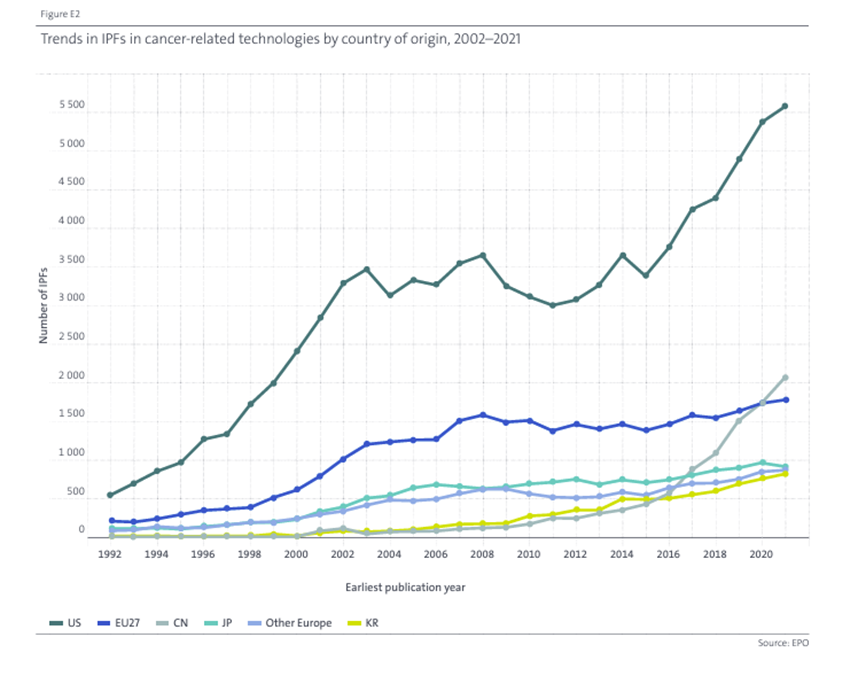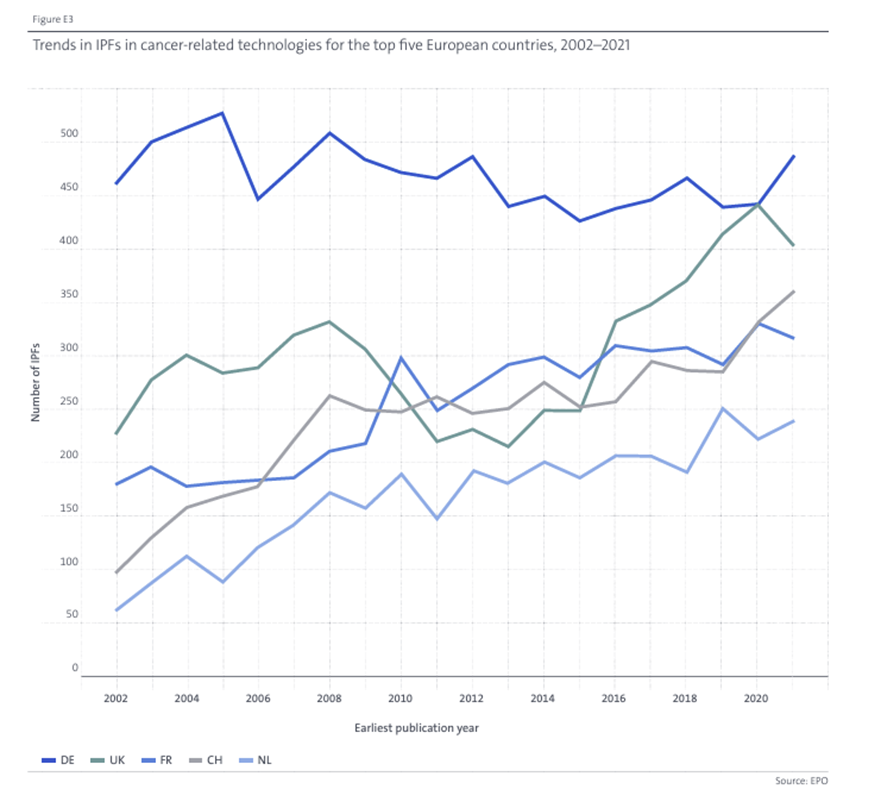Data shows that there were 19.3 million new cancer cases and nearly 10 million cancer deaths in 2020. The anti-cancer innovation invention competition is being carried out on a large scale around the world to fight cancer, a devastating disease, reduce the side effects of cancer treatment, improve the quality of life of patients, and save people from death.
Advances in cancer diagnosis and treatment have played a key role in reducing cancer mortality. Between 1988 and 2022, cancer-related deaths in the EU fell by 12%, saving more than 5 million lives.
The European Patent Office (EPO) uses global patent data to provide the most comprehensive survey of cancer-related patent applications from the past to the present, covering all aspects of cancer related to diagnosis, prevention, treatment and prognosis. In addition to letting people know about the latest inventions that help fight cancer, it also records the ongoing changes in the field of technology and the respective contributions of global cancer innovators.
Cancer innovation surges 70% since 2015
Since 1970, more than 140,000 anti-cancer inventions have been disclosed to the public. Between 2015 and 2021, international patent families grew by more than 70%, exceeding 13,000 patent families in 2021. This growth is mainly driven by the accelerated development of cancer treatment technologies such as immunotherapy, gene therapy and non-coding nucleic acids, as well as cancer diagnostics, especially liquid biopsies and health informatics.

The U.S. leads in cancer innovation, far ahead of Europe and China
From 2022 to 2021, nearly 50% of patent families were filed by US applicants. In particular, from 2015 to 2021, US applicants made considerable contributions to accelerating cancer-related innovations, with the EU27 ranking second with 18% and Japan at 9%. However, since 2021, Chinese applicants have surpassed the EU27 with more than 2,000 patent families, becoming the world's second largest new contributor to anti-cancer innovation.

Germany still leads Europe, but the UK, France, Switzerland and the Netherlands are catching up fast
Among European countries, German applicants have maintained their leadership in anti-cancer innovation over the past 20 years, with a total of 9,000 patent families between 2002 and 2021. The United Kingdom has seen strong growth over the past decade, becoming the second largest contributor to patent families in recent years, followed by France, Switzerland and the Netherlands.

Universities and public research institutions play a growing role in cancer innovation
Between 2002 and 2021, universities and public research institutions worldwide accounted for nearly one-third, or 35%, of patent families in anti-cancer related fields. Seven universities and their research institutions were among the top 20 patent applicants in the world. In 2021, these top research institutions even accounted for nearly half of the top 20 applicants in the field of cancer treatment and therapy.
Since 2007, patent applications for cancer drugs led by industry have stagnated, reflecting a change in the structure of cancer treatment, with pharmaceutical companies increasingly relying on science-based preclinical trials at universities and public research institutions.
Ranking of global patent applicants
Between 2017 and 2021, the top 10 corporate applicants worldwide included five European companies, two Japanese companies and three American companies, with Swiss company Roche ranking first, while Philips, Fuji, Siemens and Canon focused more on diagnostics.

Interested users can go to the official website of Yezhima to download the full report.
联系咨询
 | Get exact prices For the country / regionE-mail: mail@yezhimaip.com |

